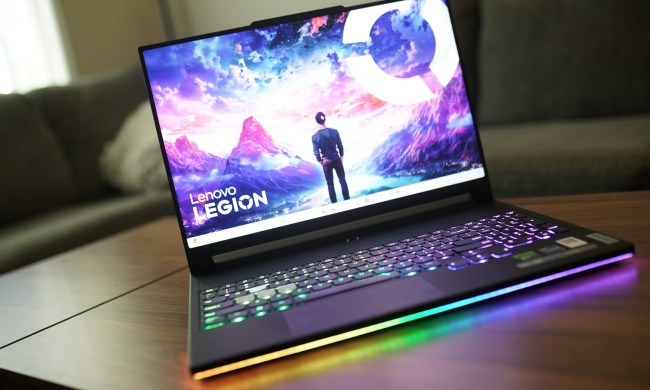Expanscape’s Aurora 7 is a 17.3-inch beast of a laptop that comes with a total of seven displays to elevate your mobile gaming to the next level. With the Aurora 7, which is currently still in the concept stage, gamers no longer have to choose between the immobile experience of gaming on a big desktop with a multi-display setup or trying to play on a small, cramped screen on a mobile rig. Nongamers can even immerse themselves in multiple tasks across all seven displays.
To make things compact enough to carry, the displays on the Aurora 7 comes in varying sizes that either fold or swivel out from the main 17.3-inch screen. Three additional 17.3-inch panels join the main display — one in the same landscape orientation sits above the display, while two portrait screens of the same size flank the main screen on either side. There are also three smaller 7-inch panels, each with a resolution of 1,920 x 1,200 pixels.

In total, the whole package weighs a whopping 17 kilograms (37.5 pounds!), so it isn’t exactly the most mobile-friendly setup. Still, given that the displays are all integrated into one unit, the Aurora 7 is easier to transport to your next LAN party after the pandemic ends than having to lug around a bunch of external monitors.
To power all these screens, Expanscape is relying on an Intel Core i9-9900K processor that’s coupled to Nvidia’s GeForce GTX 1060, but according to Tom’s Hardware, the chassis of this notebook is large enough to accommodate different platforms, like a more modern Intel Core i9-10900K or even AMD’s Ryzen 9 3950X. There’s no word on whether you can upgrade the GPU to Nvidia’s more modern GeForce RTX 3000-series mobile or AMD’s Radeon RX 6000 mobile graphics, however.
Other hardware include 64GB of memory and multiple drive options for storage, making it feel more like a desktop gaming rig. The Aurora 7 can accommodate two PCIe M.2 SSDs, a 2.5-inch SSD, and a 2TB hard disk drive.
In addition to the size and weight of the setup, another thing that can limit the Aurora 7 from being your primary travel laptop is its battery life. While the battery is rated at two hours and 20 minutes, actual battery life may be much shorter when you’re taxing the system with a high-end game. To its credit, though, Expanscape equipped the Aurora 7 with two batteries — an 82Whr battery keeps everything humming along under the hood, and a second 148Whr battery keeps the displays powered up.

Though gamers will find a lot of potential tucked into the Aurora 7’s design, the laptop can also be useful for multitaskers, designers, video editors, and graphics artists who need to juggle their work across multiple displays. Stock brokers and day traders working from home can also benefit from the multi-display setup of this laptop.

At this time, the Aurora 7 is unfortunately still a concept, and Tom’s Hardware noted that the whole setup feels more like a prototype than a product ready for shipping — when folded, the company showed that the Aurora 7’s panels are fastened together with Velcro.
It’s unknown if this laptop will ever be commercialized, and at this time we don’t know much about the unit’s pricing.


